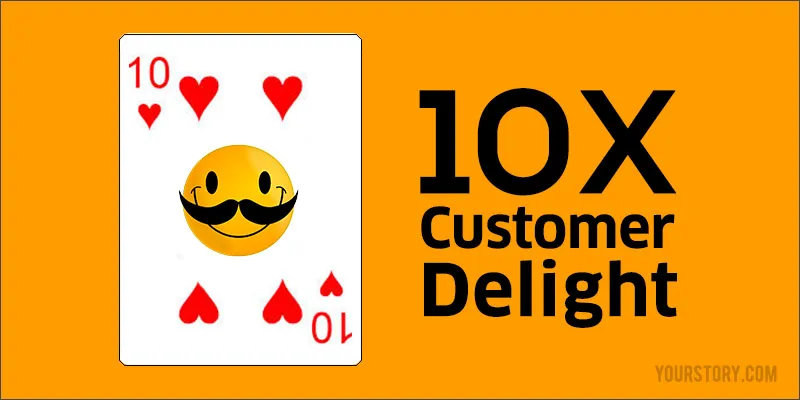How to deliver 10x customer delight
This is the second post in my ‘Going Global’ series for emerging world startups. You can read the previous article ‘Go global faster: building billion dollar tech enterprise from India’.
Having recently interacted with fair bits of startups building global technology products, one theme that has consistently emerged is that while Indian startups are solving deep problems applicable to customers across the world, the product experience leaves a lot to be desired. In order to succeed among world-class competition, we need to do better and I would like to call this building for ‘10X wow factor’.

There are three main categories of competitors that startups need to beat. First, are the large incumbents or established companies, especially in the enterprise software or B2B market. Second, up and coming businesses and other startups with similar products that are at a more level playing field. Third, it’s the lethargy of status quo, especially in the B2C and app segments where consumers don’t want to change existing behavioral patterns. But in all the three challenges, the consistent theme is to deliver an exponential rate of value so as to delight the customers beyond their expectations. There are three ways I believe it can be done:
Design
The most basic aspect is the User Experience, the process flow if you will in technical terms. Design should have a glow that attracts the users, while the functional elements keep them engaged continually. Each UI element should only be added if it’s absolutely essential in driving value for the customer by order of magnitude, or else discarded for the sake of simplicity and elegance. A good example of this is WhatsApp, which deliberately chose simplicity and ease over the feature bloat and complexity of other messaging platforms. SourceBits, the mobile app and gaming company based in Bangalore, has achieved good recognition on the Apple App Store primarily through its design-led product development methodology.
Technology
Next comes the functional feature set that defines the core value proposition of the product. While it is important to start small with a Minimum Viable Product that defines overall vision with minimal features, it is no substitute to deep technology innovation which will leap frog the competitors. Skimming on the surface in the guise of MVP or prototype that lacks long-term product vision and road map will just not work in the global markets. At the same time, the technology team should maintain clarity of product vision and reject any feature fragmentation regardless of customer requests for customization or new fads.
For example Dropbox’s core value was around ease of syncing files across devices and they relentlessly dived deep in solving that regardless of what the competition was offering. A similar example is Dhruva, an enterprise focus document management startup, which has gained significant market traction in the US.
Business model
Together with product, there should be straightforward understanding and execution on a business model vision. Operating on complex revenue models with multiple sources of revenue for version one of a product will not be difficult to pull off. Compounded with a limited customer base, such a strategy could also confuse investors on founder’s go-to market plan and clarity of business vision. For example, when Salesforce first pioneered SaaS pricing for software the market was used to complex multi-year and multi-million dollar enterprise deals, which didn’t work for vast majority of smaller customers. Their simple per user pricing created new demand and the rest as they say is history. FreshDesk, the helpdesk SaaS company based in Chennai has gained thousands of customers across the world using similar strategy.
Closing thoughts
It is imperative to build each and every step along the journey while keep adding value of 1X here and 1.5X there to pushing the ball to the 10X customer delight. The aggregated value built into the product will then have enough of a punch to keep your customer not just happy but proactively champion you amongst their peers. In my next post I will explore how startups need to be in a constant state of “flow” or momentum. It keeps the team excited and focused to relentlessly drive towards delighting customers.
Please do share your thoughts and experiences so we can learn from each other.
About the author
Brij Bhasin is an Operating Partner at GSF Accelerator and is based Bangalore. He is available on Twitter @brijbhasin







